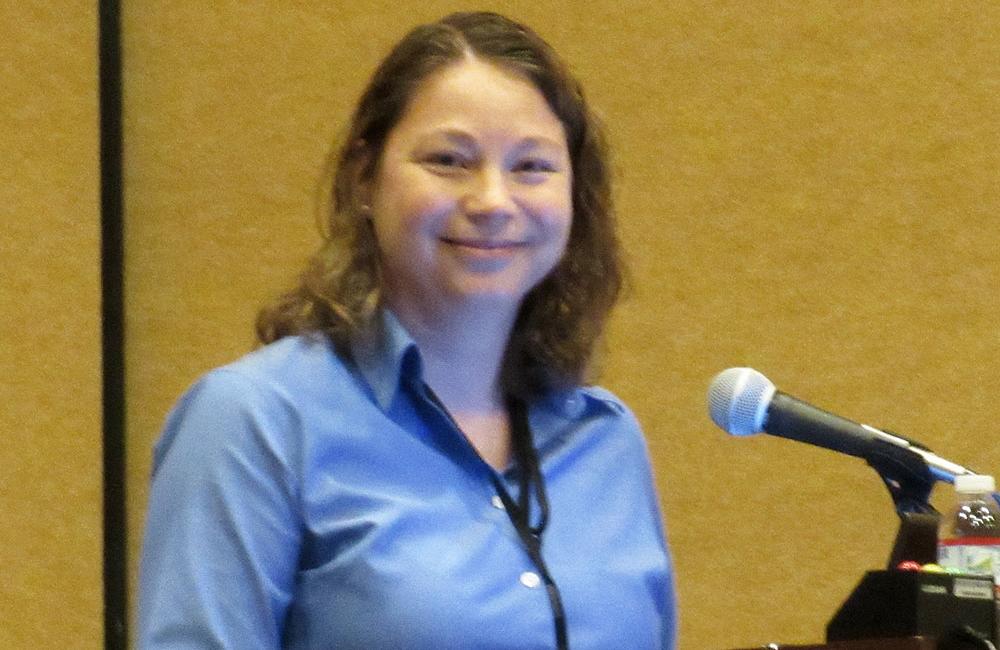
Only about a third of family practice and paediatric providers said they would be likely to prescribe HIV pre-exposure prophylaxis (PrEP) to adolescent patients, underlining the need to educate providers outside the HIV and sexually transmitted disease fields, according to a report at the 2017 Pediatric Academic Societies Meeting last week in San Francisco.
Tanya Mullins of Cincinnati Children's Hospital said that clinical guidelines supporting the use of PrEP by adolescents and Food and Drug Administration (FDA) approval of Truvada (tenofovir/emtricitabine) for this age group would help expand its use.
PrEP is highly effective in preventing HIV transmission when used consistently. The pivotal iPrEx trial of mostly gay and bisexual men showed that daily Truvada reduced the risk of HIV infection by 92% among participants with blood drug levels indicating regular use. Studies have shown that young gay and bi men can do well on PrEP, but they may need extra support to encourage adherence.
The FDA approved Truvada PrEP for adults in July 2012, but it is not yet approved for people under the age of 18. The US Centers for Disease Control and Prevention (CDC) PrEP guidelines state that the drawbacks of PrEP for adolescents – including the potential for bone loss in youth who are still growing – should be weighed against the benefit of preventing HIV in adolescents at substantial risk.
Mullins and colleagues looked at PrEP-related attitudes among physicians who provide primary care to adolescents. They conducted in-depth interviews with 38 US physicians from five different specialties – general paediatrics, family medicine, internal medicine, obstetrics/gynaecology and adolescent medicine – in a large Midwestern metropolitan area who saw at least one patient under age 18 per week.
The interviews assessed familiarity with PrEP, the perceived benefits of and barriers to providing PrEP to adolescents, and factors that would make it easier or more difficult to offer PrEP. The clinicians were asked how likely they were to recommend PrEP to adolescents, and how likely they were to actually prescribe it.
A majority of the providers (71%) were women, the mean age was 45 years and they graduated from medical school an average of 19 years ago. Nearly half had urban practices, half had suburban practices and just 5% had rural practices. They saw an average of 21 adolescent patients per week. Most physicians (79%) had previous treated patients with HIV, but only 37% said they were somewhat or very familiar with PrEP.
The perceived benefits of PrEP included reduced likelihood of HIV infection (mentioned by 19 providers), acceptability to patients (13), improved provision of sexual health services (7), improved patient awareness of their HIV risk (7), effectiveness for HIV prevention (4), educating patients and communities about HIV and PrEP (4) and improved adherence to routine daily oral use of PrEP rather than using it at the time of sex (4).
"I think if someone is taking something every day, it's also sort of a reminder to them maybe about why they're taking it, and trying to be more careful," one respondent said.
The most commonly mentioned facilitating factors for prescribing PrEP were low cost or coverage by insurance (mentioned by 19), physician education about PrEP (13), availability of patient educational materials (11) and clinical guidelines for PrEP use by youth (10).
Perceived barriers to PrEP at the patient level included lack of acceptability to patients (mentioned by 14), patients seeing themselves as being at low risk for HIV (8) and the need for regular monitoring (3).
Barriers at the physician level included concerns about patients' adherence and follow-up (mentioned by 30 and 8, respectively), safety and side-effects concerns (29), parental disapproval (17), lack of provider education about PrEP (16), lack of FDA approval of PrEP use by minors (13), concerns about confidentiality (9), concerns about prescribing to young people (9), not seeing appropriate candidates for PrEP (6) and lack of legal clarity (6).
System-level barriers included concerns about cost or lack of insurance coverage (mentioned by 33), logistical barriers (15), lack of access such as pharmacies refusing to dispense PrEP to young people (8) and lack of public education and awareness about PrEP and HIV (4).
"I guess I'd consider PrEP [for a patient under age 18] if they're very high risk. But I probably wouldn't do it on a routine basis because it's not recommended for that," one respondent said.
"If [someone under 18 is] having really, truly very high risk sexual behaviours, I think that needs a different level of intervention than me prescribing them [PrEP]," said another.
While 42% of the physicians overall said they were highly or somewhat likely to recommend PrEP, only 34% said they were likely to actually prescribe it. Paediatricians were the most likely to recommend PrEP, but not to prescribe it (63% and 38%, respectively). Other specialists were equally likely to recommend and prescribe PrEP, including adolescent medicine doctors (50% for both) and ob/gyn providers (38% for both). Internal medicine physicians were least likely to either recommend or prescribe PrEP (17% for both).
"Barriers at multiple levels – patient, physician, and systems – need to be addressed," the researchers concluded. Willingness to provide PrEP would be facilitated by further physician education, clinical guidelines specifically supporting PrEP use by adolescents, and FDA approval of PrEP for minors.
Mullins TL et al. Oral pre-exposure prophylaxis (PrEP) for HIV prevention in youth: attitudes of primary care physicians. Pediatric Academic Societies Meeting, abstract 2150.5, 2017.
